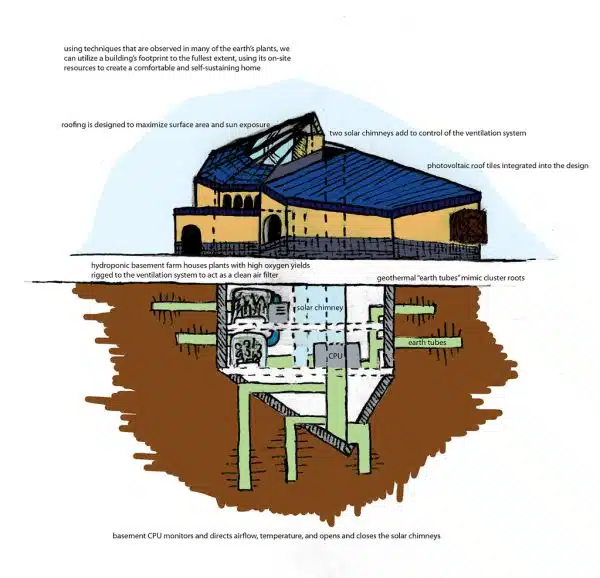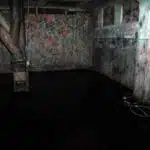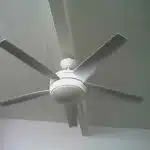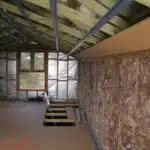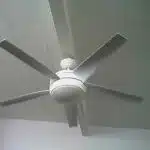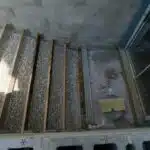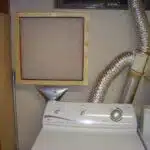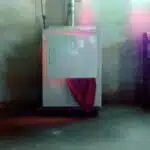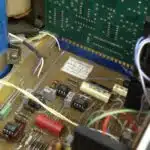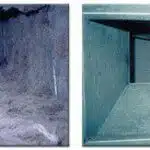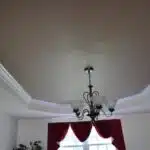As a home ventilation expert, I have encountered numerous cases where homeowners face issues with basement ventilation. Many people often overlook the importance of proper ventilation in basements, which can lead to a variety of problems such as mold growth, dampness, and poor air quality. Ventilating your basement is crucial to maintaining a healthy living environment and preserving the structural integrity of your home.
In this article, we will explore various methods and techniques for ventilating your basement effectively. From installing windows to utilizing mechanical systems like fans and dehumidifiers, we will cover all the essential aspects required to ensure that your basement is adequately ventilated. With our step-by-step guide, you’ll be able to make informed decisions about which method suits your needs best and create a functional and efficient ventilation system that enhances the comfort of your home while protecting it from damage caused by moisture buildup.
Understanding The Importance Of Basement Ventilation
Proper ventilation is critical for any home, including basements. Basements are prone to dampness and humidity due to their location and lack of natural airflow. Without proper ventilation, the air in a basement can become stagnant, leading to various health risks. Therefore, it is crucial to understand the importance of proper ventilation in a basement.
The health risks associated with poor ventilation in basements are significant. Damp and humid environments provide an ideal breeding ground for mold and mildew, which can cause respiratory problems such as asthma and allergies. Additionally, high levels of moisture can attract pests like rodents and insects. These pests can carry harmful bacteria that pose health risks to humans.
Proper ventilation not only mitigates these health risks but also improves the overall indoor air quality of your home. A well-ventilated basement allows fresh air to circulate and removes stale and musty odors that often accompany damp environments. Ultimately, proper basement ventilation is essential for maintaining a healthy living environment for you and your family.
To determine if your basement needs better ventilation, it’s important to look for specific signs.
Signs Your Basement Needs Better Ventilation
If your basement is feeling stuffy and damp, it might be time to assess the effectiveness of your ventilation system. Poor ventilation can lead to a buildup of moisture and pollutants in the air, which can cause health problems for you and your family. In extreme cases, it can even lead to mold growth or other structural damage.
One sign that your basement needs better ventilation is if you notice a musty smell. This odor is often caused by mold or mildew growing in the damp environment. Another indicator is if you or anyone in your family experiences allergy-like symptoms such as sneezing, coughing, or watery eyes when spending time in the basement. These symptoms could be caused by poor indoor air quality.
Improving air quality in your basement can be achieved through proper ventilation. Installing fans or vents can help circulate air and reduce moisture levels. It’s also important to keep the area clean and dry to prevent mold growth. Additionally, using an air purifier can help remove pollutants from the air, improving overall indoor air quality.
Assessing ventilation effectiveness and improving air quality should be a priority for homeowners who spend time in their basements regularly. By taking these steps, you can create a healthier living space for you and your family while avoiding potentially costly structural damage down the line. In the next section, we will discuss how to assess your basement’s ventilation needs so that you can take action towards better indoor air quality.
Assessing Your Basement’s Ventilation Needs
- When assessing the ventilation needs of a basement, it is important to first identify the type of ventilation system that is required.
- This will involve assessing the size of the basement, the type of activities that will be conducted in it, and the location of the room in relation to the outside environment.
- Once the type of ventilation system has been identified, the required ventilation rates must be calculated.
- This calculation should be based on the size of the space, the type of activities to be conducted, and the amount of air that needs to be exchanged with the outside environment.
Identifying Ventilation Type
When it comes to assessing the ventilation needs of your basement, identifying the type of ventilation system you have is crucial. There are two main types of ventilation systems: natural and mechanical. Natural ventilation relies on air flow through windows, doors, and other openings in the basement. Mechanical ventilation, on the other hand, uses fans or exhaust systems to regulate air flow.
It’s important to consider various factors when choosing a ventilation design for your basement. For instance, the size and layout of your basement will determine which type of ventilation system is best suited for your needs. Additionally, if you plan on using your basement as a living space, you’ll need to take into account factors such as humidity levels and indoor air quality. A well-designed ventilation system can help prevent moisture buildup, mold growth, and poor air quality.
Overall, identifying the right type of ventilation system for your basement can greatly improve its overall comfort and safety. By working with a professional home ventilation expert, you can assess your specific needs and choose a system that meets those requirements while staying within your budget constraints. Whether you opt for natural or mechanical ventilation, proper installation and maintenance will ensure that your basement remains a safe and healthy environment for years to come.
Calculating Ventilation Requirements
To ensure that your basement has adequate ventilation, it’s important to calculate the ventilation requirements based on its size, occupancy, and other factors. The ventilation rate is a measure of how much air needs to enter and exit the space to maintain good air quality and prevent moisture buildup. There are several ventilation standards set by organizations such as ASHRAE and IRC that can guide you in determining the ideal ventilation rate for your basement.
Calculating the required ventilation rate involves taking into account the square footage of the basement, the number of occupants, and any appliances or equipment that may contribute to indoor air pollution. In addition, factors such as humidity levels and outdoor air quality can also impact ventilation requirements. A professional home ventilation expert can help you assess these factors and determine an appropriate ventilation rate for your specific needs.
Once you have determined the required ventilation rate for your basement, you can choose a natural or mechanical ventilation system that meets those requirements. Proper installation and maintenance of the system will ensure that it operates efficiently and effectively in maintaining good indoor air quality. By following these steps, you can ensure that your basement remains a healthy and comfortable environment for years to come.
Installing Windows For Natural Ventilation
Natural ventilation can be an effective way to ventilate your basement, and installing windows is a great way to achieve this. There are different types of windows that you can use for natural ventilation, such as casement windows, awning windows, hopper windows, and sliding windows. Each of these window types has its own advantages and disadvantages, so it’s important to choose the right one for your needs.
To install windows for natural ventilation in your basement, you need to follow a specific process. First, you need to select the type of window that best suits your needs. Then, you need to measure the window opening and order the correct size window. Next, you need to prepare the opening by removing any existing framing or trim that may be in the way. Finally, you can install the new window by following the manufacturer’s instructions.
Installing windows for natural ventilation in your basement can have several benefits. Here are some reasons why it’s worth considering:
- Improved air quality: Fresh air from outside can help reduce moisture levels and remove pollutants from indoor air.
- Lower energy bills: Natural ventilation reduces reliance on mechanical systems like fans or air conditioners, which can lead to lower energy bills.
- Increased natural light: Installing windows allows more natural light into your basement space, making it feel brighter and more inviting.
Now that you understand the installation process for natural ventilation through windows and the benefits of installing them in your basement let’s move on to choosing the right type of window for your needs.
Choosing The Right Type Of Window For Your Basement
When it comes to ventilating a basement, installing windows is a popular option. However, not all windows are created equal, and choosing the right type of window for your basement is crucial in ensuring proper ventilation. One important factor to consider is window placement. Windows should be installed in areas where there is minimal obstruction to airflow, such as near the ceiling or above ground level.
Another important consideration is the materials used for the window. Opting for energy-efficient materials can help reduce heating and cooling costs while also improving air quality. Vinyl and fiberglass frames are popular choices due to their durability and low maintenance requirements. Double-pane glass with gas filling can also provide better insulation and noise reduction.
Overall, choosing the right type of window for your basement involves considering factors such as window placement, installation process, and window materials’ energy efficiency. Properly installed windows can significantly improve ventilation in a basement while reducing energy costs. In the next section, we will explore how installing vents can further improve airflow in your basement without compromising on energy efficiency or aesthetics.
Installing Vents For Improved Airflow
- Home ventilation systems are comprised of various types of vents and grills that are used for air intake and exhaust, including louvered and gravity wall vents, and ducted and ductless systems.
- The location of vents is an important consideration when installing a ventilation system, as the inlet and outlet vents should be placed in the most suitable positions for optimal air circulation.
- Placing an intake vent near a natural air source, such as a window or door, and an exhaust vent near a furnace, water heater, or bathroom, can help ensure a balanced ventilation system.
- For basements, it is important to install vents that are designed to be moisture and water resistant, to protect against mildew, mold, and odors.
Types Of Vents
When it comes to improving airflow in a basement, installing vents is crucial. But not all vents are created equal, and it’s important to understand the different types available. There are passive and active vents to choose from, each with their own benefits.
Passive vents rely on natural air pressure and temperature differences to create airflow. They don’t require any electricity or fans to function. Examples of passive vents include gable vents, soffit vents, and ridge vents. These types of vents can be installed by homeowners themselves with basic DIY skills and tools. However, if you’re unsure about how to properly install them or if your basement requires more complex ventilation solutions, hiring a professional may be necessary.
On the other hand, active vents use fans or blowers to move air in and out of the basement. They can provide more consistent airflow compared to passive options but require electricity to function. Some examples of active vents include exhaust fans, whole-house fans, and supply registers. Due to the electrical component involved in installation, it’s recommended that a professional handle this type of vent installation. Remember that proper ventilation is key for keeping your basement safe and comfortable for everyone who uses it.
Location Of Vents
Now that we have covered the different types of ventilation systems, let’s discuss the importance of vent placement. The location of vents is crucial in ensuring proper airflow and creating a comfortable environment in your basement. There are several factors to consider when deciding where to place vents, such as the size and layout of your basement, the location of walls and windows, and the direction of prevailing winds.
One crucial consideration for vent placement is to ensure that there is adequate space between vents. Placing them too close together can disrupt airflow, leading to inefficiencies in ventilation. Additionally, it’s important to avoid placing vents in areas that are prone to moisture buildup or water leaks as this can lead to mold growth and other issues.
Another factor to consider is whether you need both intake and exhaust vents or just one type. Intake vents bring fresh air into your basement while exhaust vents remove stale air. The number and placement of each type will depend on the size and layout of your basement, as well as any specific requirements you may have for ventilation needs. By working with a professional ventilation expert, you can determine the optimal vent placement for maximum effectiveness and efficiency.
Utilizing Mechanical Ventilation Systems
It’s ironic how we often overlook the importance of basement ventilation. Perhaps it’s because basements are usually hidden from plain sight, or maybe it’s because we assume that the air down there is naturally stagnant. Regardless of the reason, one thing is for sure: proper ventilation is crucial to maintaining a healthy living environment in your home.
One effective way to ventilate your basement is by utilizing mechanical ventilation systems. These types of systems can be installed in various ways, such as through wall-mounted vents or ductwork connected to your HVAC system. The benefits of using mechanical ventilation include improving indoor air quality, reducing moisture buildup and odors, and preventing mold growth.
However, it’s essential to note that there are potential drawbacks to using mechanical ventilation. For instance, these systems require electricity to function, which could lead to increased energy consumption and higher utility bills. Additionally, depending on the type of system you install, there may be ongoing maintenance requirements that could add further expenses over time.
- To make the most out of your mechanical ventilation system, consider implementing the following practices:
- Regularly clean or replace air filters to ensure optimal performance.
- Install a timer or humidity sensor to regulate when your ventilation system operates.
- Consider installing an energy-efficient model that meets industry standards for power usage.
In summary, mechanical ventilation can be an effective solution for ventilating your basement and improving indoor air quality. However, it’s important also to consider potential drawbacks associated with these types of systems before making a decision on what will work best for you. In our next section, we’ll explore understanding the role of fans in basement ventilation and how they can help improve airflow within your space.
Understanding The Role Of Fans In Basement Ventilation
Fans play a crucial role in basement ventilation. Proper fan placement and sizing are essential to ensure that the basement receives adequate airflow. Fan placement is critical because it determines the direction of airflow in the basement. Fans should be placed in areas where there is stagnant air, such as corners or near moisture-prone areas like sump pumps.
When it comes to fan sizing, it is vital to choose fans that can move enough air to effectively ventilate your basement. The size of the fan required depends on the size of your basement and how well-sealed it is. In general, larger basements require more significant fans than smaller ones to achieve proper ventilation. A professional home ventilation expert can help you determine the appropriate fan size for your specific needs.
In summary, proper fan placement and sizing are key factors in ensuring effective basement ventilation. By strategically placing fans and selecting appropriately sized ones, you can improve indoor air quality and prevent moisture buildup, which can lead to mold growth and other health concerns. In the next section, we will discuss how to choose the right fan for your basement based on these factors.
Choosing The Right Fan For Your Basement
When it comes to choosing the right fan for your basement, there are a few things to consider. First and foremost, fan placement is crucial. You want to make sure that you are placing your fan in an area where it can draw air from the entire basement. This means that it should be placed in a central location, preferably near the ceiling.
Another important factor to keep in mind when selecting a fan is noise reduction. The last thing you want is for your basement fan to be so loud that it becomes a nuisance. Look for fans that are specifically designed for quiet operation and have noise-reducing features built-in. With the right fan, you’ll be able to enjoy a comfortable, well-ventilated basement without any distracting or annoying sounds.
Overall, selecting the right fan for your basement can make all the difference in terms of air circulation and overall comfort. Take some time to research different options and find one that fits your specific needs and preferences. By doing so, you’ll be able to create a space that is both functional and enjoyable to spend time in.
As we’ve discussed, choosing the right fan is an important step in properly ventilating your basement. However, it’s not the only step you should take. In addition to installing a high-quality fan, it’s also important to consider installing a dehumidifier for moisture control. Excess moisture can lead to mold growth and other issues, so taking steps to address this problem is crucial for maintaining good air quality in your home.
Installing A Dehumidifier For Moisture Control
As we discussed in the previous section, choosing the right fan for your basement is crucial in promoting proper ventilation. However, simply installing a fan may not be enough to control moisture levels in your basement. Did you know that according to the EPA, indoor humidity levels should be between 30-60% to prevent mold growth? This is why installing a dehumidifier can be an important step in keeping your basement dry and healthy.
When it comes to dehumidifiers, placement is key. It’s recommended to place the unit in an open area of the basement with good air circulation. Avoid placing it near walls or corners where airflow may be restricted. In addition, make sure to choose a dehumidifier with a suitable capacity for your space. Some of the best brands for dehumidifiers on the market include Frigidaire, hOmeLabs, and Keystone.
Proper maintenance of your ventilation system is essential for optimal performance. This includes regularly cleaning or replacing air filters, checking ducts and vents for any blockages or damage, and scheduling professional inspections at least once a year. By following these tips and investing in quality equipment like fans and dehumidifiers, you can ensure that your basement remains well-ventilated and free from harmful pollutants like mold and mildew.
Tips For Proper Maintenance Of Your Ventilation System
Proper maintenance of your home’s ventilation system is essential for ensuring clean and healthy air indoors. Maintaining filters is one important aspect of this upkeep. Filters help to capture dirt, dust, and other pollutants that can accumulate in your ducts over time. Clean filters ensure efficient airflow, which not only keeps the air fresher but also lowers energy costs. Make sure to check and replace your filters regularly, especially during seasons with high pollen counts.
Cleaning ducts is another crucial part of maintaining your ventilation system. Over time, ducts can become clogged with debris, leading to poor indoor air quality. Professional duct cleaning services can help remove built-up dirt and dust from your system, improving overall air circulation. Consider scheduling a professional cleaning at least once every few years or more often if you notice unusual odors or allergies when using the HVAC system.
By following these simple tips for proper maintenance of your ventilation system, you can improve indoor air quality and keep energy costs low while ensuring optimal performance of your HVAC unit. Remember to always follow manufacturer guidelines for filter replacement and hire a professional service for duct cleaning as necessary to avoid potential damage to your system. In the next section, we will discuss common mistakes to avoid when ventilating your basement.
Common Mistakes To Avoid When Ventilating Your Basement
- One of the most common mistakes when ventilating a basement is not checking the airflow of the ventilation system.
- Neglecting to clean the air ducts can lead to the circulation of dust and other pollutants throughout the basement.
- Improperly sealed cracks in the walls or ceilings can allow outside air and moisture to enter, leading to an increase in humidity levels.
- Regular maintenance of the ventilation system is essential to ensure proper airflow and to reduce the risk of dust, allergens, and moisture buildup.
- Proper sealing of cracks, gaps, and openings should be done to reduce the risk of outside air and moisture entering the basement.
- Installing and maintaining a proper ventilation system is a critical part of ensuring a healthy, comfortable basement environment.
Not Checking Airflow
When it comes to ventilating your basement, one of the most common mistakes homeowners make is neglecting to check the airflow. This can be a costly error that leads to a number of issues down the road. An airflow inspection should be conducted regularly to ensure proper ventilation and prevent risks associated with poor air quality.
Poor ventilation in a basement can lead to a host of problems, including mold growth, moisture accumulation, and unpleasant odors. In addition, inadequate airflow can cause indoor pollution by trapping harmful gases like radon and carbon monoxide. These risks can be mitigated by ensuring proper ventilation through regular inspections and maintenance.
Homeowners should take an active role in ensuring their basements are well-ventilated by checking for airflow regularly. It is important to identify any potential issues early on and address them before they become bigger problems. By taking these steps, you can improve the air quality in your home and promote a healthier living environment for you and your family.
Not Cleaning Air Ducts
Neglecting to clean air ducts is another common mistake that homeowners make when ventilating their basements. Failing to maintain the air ducts can lead to a buildup of dust, dirt, and other debris, which can reduce airflow and affect the quality of indoor air. This can lead to various health hazards for you and your family.
The dangers of neglecting air duct cleaning cannot be overstated. Dirty air ducts can harbor harmful bacteria, viruses, and allergens that may cause respiratory problems such as asthma and allergies. Moreover, clogged air ducts can also increase energy consumption by reducing the efficiency of HVAC systems. Therefore, it is crucial to have your air ducts cleaned regularly by a professional to ensure proper ventilation and reduce the risk of health hazards.
In conclusion, not cleaning air ducts is among the common mistakes that homeowners should avoid when ventilating their basements. Neglecting this critical maintenance task can result in serious health hazards for you and your family. Therefore, it is essential to prioritize regular cleaning of your air ducts as part of your basement ventilation plan to promote a healthier living environment in your home.
Neglecting To Seal Cracks
Ensuring proper ventilation in your basement requires more than just installing fans and vents. Homeowners often make mistakes that can compromise the effectiveness of their ventilation systems, leading to health hazards and reduced indoor air quality. Neglecting to seal cracks is one such mistake that can significantly impact basement ventilation.
Sealing cracks is crucial for preventing moisture from entering your basement and compromising the quality of indoor air. When moisture seeps into your basement through cracks, it creates a conducive environment for mold growth, which can cause respiratory problems and other health hazards. Moreover, dampness in the basement also attracts pests like insects and rodents, which can further compromise indoor air quality. Therefore, homeowners should prioritize sealing all visible cracks as part of their waterproofing measures to enhance their basement’s overall ventilation.
Neglecting to seal cracks is a common mistake that could lead to costly repairs in the long run. By sealing all visible cracks and gaps in your basement walls, floors, or windows, you will minimize the risk of moisture intrusion and improve indoor air quality. This way, you’ll prevent mold growth and pest infestation while promoting better airflow in your home. Overall, ensuring proper ventilation in your basement calls for an integrated approach that includes sealing all visible cracks as part of your waterproofing measures.
Hiring A Professional For Basement Ventilation
After learning about the common mistakes to avoid when ventilating your basement, it is important to consider hiring a professional for this task. While there are benefits to DIY projects, when it comes to basement ventilation, it is best left to the experts. Professionals have the knowledge and experience to properly assess your basement’s unique needs and provide effective solutions.
When considering hiring a professional for basement ventilation, there are several important considerations to keep in mind. First, make sure they have experience with basement ventilation specifically. General contractors or HVAC technicians may not have the same level of expertise in this area. Additionally, check their credentials and certifications to ensure they are properly trained and qualified for the job.
One major benefit of hiring a professional for basement ventilation is that they can help you compare the costs of different ventilation methods. There are various options available such as natural ventilation, mechanical ventilation, or a combination of both. A professional can help you weigh the pros and cons of each option in terms of upfront costs, long-term maintenance expenses, and energy efficiency. By having a clear understanding of these factors, you can make an informed decision on which method is best suited for your needs and budget.
Comparing The Costs Of Different Ventilation Methods
The cost of installation varies greatly depending on the type of ventilation system used, with natural ventilation being the least expensive and mechanical ventilation being the most expensive. Additionally, the running costs of the different ventilation systems should be taken into account, with natural ventilation being the most economical and mechanical ventilation being the most expensive. Furthermore, when considering the costs of installation, the size of the basement should also be taken into account, as larger basements require larger ventilation systems. Finally, it is important to factor in the long-term costs of the system, as some ventilation systems may require more maintenance than others.
Comparing Installation Costs
When it comes to ventilating a basement, there are various methods available. However, the installation costs of these methods vary greatly, making it essential to compare them before deciding which one to use. Cost comparison is an important factor in budget planning, and homeowners should consider their budget before choosing a ventilation method.
One of the most affordable ventilation methods is the use of exhaust fans. Exhaust fans can be installed in windows or walls and are relatively easy to install. The cost of installing an exhaust fan typically ranges between $150 and $400, depending on the size of the fan. While this method may not be as effective as other ventilation techniques, it is an excellent option for those on a tight budget.
Another popular basement ventilation method is the use of dehumidifiers. Dehumidifiers work by removing excess moisture from the air, preventing mold growth and improving air quality. They are easy to install and come in different sizes and price ranges, with some costing as little as $100 and others up to $1,500 or more. Although they may not be as effective in removing harmful gases and pollutants like other ventilation methods, they are still a great option for those looking for an affordable solution.
In conclusion, comparing installation costs is crucial when choosing a basement ventilation system that fits your budget. While exhaust fans and dehumidifiers are both affordable options, their effectiveness varies depending on the size of your basement and how much moisture or pollutants you need to remove from the air. Ultimately, homeowners should carefully consider their needs before making a decision on which method to choose.
Comparing Running Costs
Another important aspect to consider when choosing a basement ventilation system is the running costs. While installation costs are crucial, running costs can add up significantly over time. Comparing the ventilation costs of different methods can help homeowners determine which one is the most cost-effective option for their needs.
One cost-effective ventilation method is using ceiling fans or pedestal fans. These fans circulate air and create a cooling effect in the summer, reducing the need for air conditioning and lowering energy bills. The running cost of a ceiling fan ranges between $0.01 to $0.03 per hour, while pedestal fans range between $0.05 to $0.10 per hour. This makes them an affordable and effective option for those who want to improve air quality without breaking the bank.
Another cost-effective option is using natural ventilation by opening windows and doors or installing vents that allow fresh air to enter the basement. Natural ventilation does not require any electricity or additional equipment, making it a low-cost solution for homeowners on a budget. However, it may not be as effective as other methods in removing pollutants and excess moisture from the air, especially in areas with high humidity levels.
Overall, comparing running costs is essential when choosing a basement ventilation system that fits your budget and needs. Ceiling fans, pedestal fans, and natural ventilation are all affordable options that can effectively improve air quality while reducing energy bills over time. Homeowners should carefully consider their priorities before making a final decision on which method to choose for their basement ventilation needs.
Maximizing Energy Efficiency In Your Basement Ventilation System
To maximize the energy efficiency of your basement ventilation system, you need to focus on two key areas: insulation and sealing. Insulation is vital in preventing heat loss during the winter and keeping cool air inside during the summer. Sealing your basement will help prevent drafts from entering and prevent unwanted moisture from creeping in. By addressing these two issues, you can create a more energy-efficient space that will save you money on utility bills.
To insulate your basement, start by examining the walls and floors for any gaps or cracks. These can be sealed with spray foam or caulk to prevent heat loss and keep out drafts. You should also consider insulating any exposed pipes or ductwork in the basement as they can be a significant source of heat loss. In addition to insulation, make sure that your windows are properly sealed with weatherstripping to prevent air leaks.
Maintenance is critical for ensuring that your ventilation system operates at optimal efficiency. Regular cleaning of vents and filters helps to ensure proper airflow throughout the space, which can have a significant impact on energy consumption. Filters should be replaced every 3-6 months to ensure that they are effectively removing dust, dirt, and other particles from the air. Neglecting maintenance can not only increase your energy costs but also lead to poor indoor air quality.
By maximizing efficiency through insulation and sealing and staying on top of maintenance tasks like cleaning and filter replacement, you can create an energy-efficient basement ventilation system that will save you money while providing a comfortable living environment for years to come.
Conclusion
Basement ventilation is an important aspect of maintaining a healthy and comfortable home. Proper ventilation helps to prevent moisture buildup, mold growth, and poor air quality. Signs that your basement may need better ventilation include musty odors, excessive humidity, and condensation on windows or walls.
Before installing any type of ventilation system in your basement, it is important to assess your specific needs. This may involve measuring the size of your basement, determining the current level of humidity, and identifying areas that may be prone to moisture buildup. Installing windows for natural ventilation can be an effective solution for many basements. However, it is important to choose the right type of window based on factors such as size, location, and accessibility.
One interesting statistic to consider is that according to the Environmental Protection Agency (EPA), indoor air can be up to five times more polluted than outdoor air. This highlights the importance of proper ventilation in all areas of your home, including the basement. By investing in a well-designed ventilation system, you can improve the air quality in your home and reduce the risk of health problems associated with poor indoor air quality.
When it comes to maximizing energy efficiency in your basement ventilation system, there are several options available such as choosing efficient fans or using programmable thermostats. It is also important to avoid common mistakes such as over-ventilating or under-ventilating your space. Hiring a professional for assistance with installation and maintenance can ensure that your system is working effectively and efficiently.
Overall, proper basement ventilation is essential for maintaining a healthy and comfortable home environment. By understanding the signs that indicate poor ventilation and taking steps to assess and address these issues, you can create a safe and enjoyable living space for you and your family.
Image Credits
- “Ventilator House” by labguest (featured)

